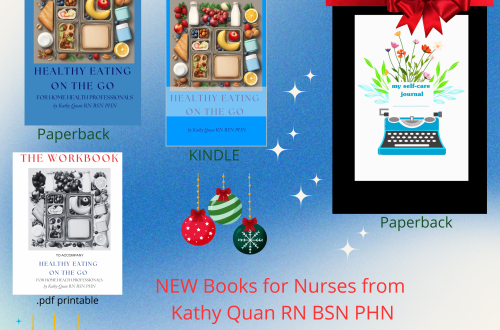A Guest Post from Daphne Stanford
 |
| Oxycodone |
It’s sobering to put these drug facts into perspective: according to the American Association of Colleges of Nursing, a 2015 White House press release stated, “Opioids are a class of prescription pain medications that includes hydrocodone, oxycodone, morphine, and methadone. Heroin belongs to the same class of drugs, and four in five heroin users started out by misusing prescription opioid pain medications.”
Seeing all those drugs placed into the same category as heroin really makes the imperative abundantly clear: we must treat these substances for what they are: extremely addictive and destructive drugs, not painkillers. They should only be considered worthy of a prescription as a last resort; even then, they should be handled with extreme caution. According to Bradley University, 78 people in the United States die from an opioid overdose every day. This is true despite the fact that Americans have not reported increased levels of pain; moreover, the sales of prescription opioids nearly quadrupled between 1999 and 2014.
 |
| buprenorphine/naloxone |
Significantly, because of the recently passed Comprehensive Addiction and Recovery Act, nurse practitioners will now be legally allowed to administer drugs like buprenorphine for withdrawals, as well as naloxone, an overdose-reversing drug. This expansion to include nurse practitioners in those allowed to prescribe buprenorphine is a huge step forward since, historically, only physicians have been allowed to prescribe it.
Requiring any healthcare professionals who prescribe opioids to take a certain amout of continuing education about the drugs would be an excellent requirement; so far, however, only a handful of states have implemented this guideline.
In addition to improved access to life-saving medication, opioid addiction prevention and education efforts will also be expanded—among both patients and medical professionals. According to Frontline, drugs now kill more Americans than cars, and twelve states in 2012 had more opioid prescriptions than people. Take Baltimore as an example: from 2013 to 2015, deaths from fentanyl overdoses increased 600 percent—apparently mirroring a trend in other East Coast cities. As a result, the city’s health commissioner, Leana Wen, prescribed the antidote naloxone, which halts overdoses, to all residents.
Encouragingly, Science Magazine reports some clinical studies suggest that marijuana may have medical value for difficult-to-treat pain conditions:
California, which in 1996 became the first U.S. state to legalize medical marijuana, led the way with its Center for Medicinal Cannabis Research, which has done several placebo-controlled studies on pain… The first, published in 2008, found that smoking marijuana reduced pain caused by nerve damage in 38 patients, with minimal side effects. The second, published in 2013, found that vaporized cannabis, even in low doses, relieved pain in a similar group of patients who hadn’t responded to traditional medications, including opioid analgesics.
Though this research is probably not surprising to many, it’s frustrating how little of it seems to have been widely publicized. However, out of sixty peer-reviewed studies from 1990-2014, 68 percent of the results proved favorable to marijuana use to treat conditions such as ALS and Multiple Sclerosis.
The fact that one out of every fifteen people who abuse or misuse prescription painkillers will try heroin seems to suggest that opioids are much more of a ‘gateway drug’ than marijuana ever will be. To consider a few other statistics, the University of New England reports opiate abuse and addiction cost the U.S. 484 billion dollars, every year. Addicts are also responsible for 50% of major crimes.
 |
| Vicodin |
Furthermore, although the U.S. only makes up 4.6 percent of the world’s population, it consumes 80 percent of its opioids and 99 percent of its hydrocodone, the opiate that is in Vicodin. Lastly, people in rural counties are nearly twice as likely to overdose on prescription painkillers as people in big cities.
What can we do, then, to reverse these trends? The Hazelden Betty Ford Foundation has put forth a series of recommended actions that include evidence-based solutions including comprehensive education and prevention like limits on medications and a ban on direct marketing of opioids. The Betty Ford Center’s Pain Management Program takes a comprehensive approach based on reshaping how the brain reacts to pain, utilizing non-opioid interventions. They also support the integration of community-based recovery and telehealth-based resources to help give patients a chance at full recovery.
Encouragingly, according to Dr. Ted Cicero, professor of psychiatry at Washington University, many doctors have become wary of prescribing opioids after considering the bad publicity surrounding opioid abuse. In late August of this year, the U.S. Surgeon General, Dr. Vivek Murphy, sent U.S. doctors a letter urging them to educate themselves about opioids, screen patients for opioid abuse, and treat addiction as a chronic illness, rather than a moral failing.
Let’s remember that an effective response to the opioid epidemic requires a comprehensive, multi-pronged approach from all fronts. Rather than be left entirely up to the patient, recovery from addiction involves doctors and nurses, counselors, friends, family, and community members. Only together, with the help of education and science-based treatment, can we heal from this problem, as a nation.
Daphne Stanford hosts “The Poetry Show!” on KRBX, her local community radio station, every Sunday at 5 p.m. A writer of poetry, nonfiction, and lyric essays, her favorite pastimes include hiking, bicycling, and good conversation with friends and family. Follow her on Twitter @TPS_on_KRBX.
Read more from Daphne:
- http://www.rxeconsult.com/healthcare-articles/Using-Telemedicine-Nursing-Visits-And-Remote-Counseling-To-Improve-Health-1258/
- http://www.culturalweekly.com/aging-baby-boomer-population-healthcare-community-outreach/
- http://www.psypost.org/2016/09/neuroplasticity-and-the-autism-spectrum-44799
Thanks Daphne!


